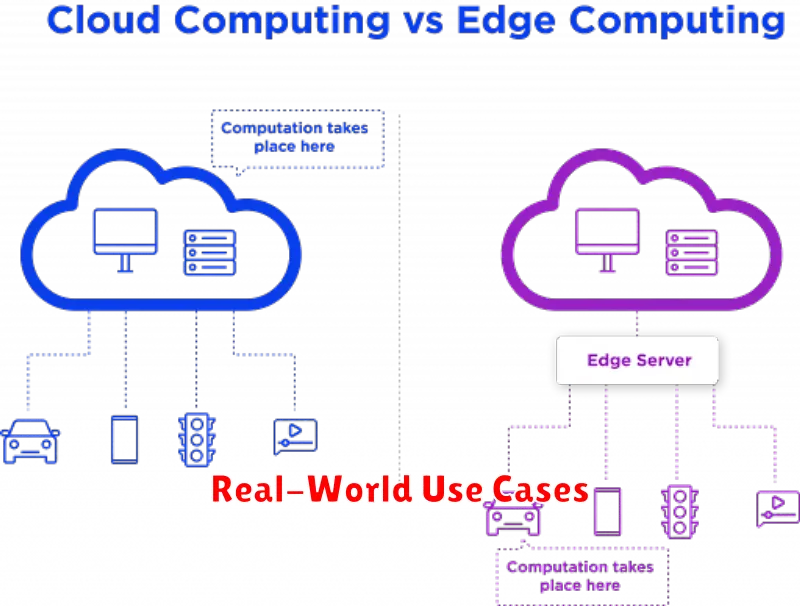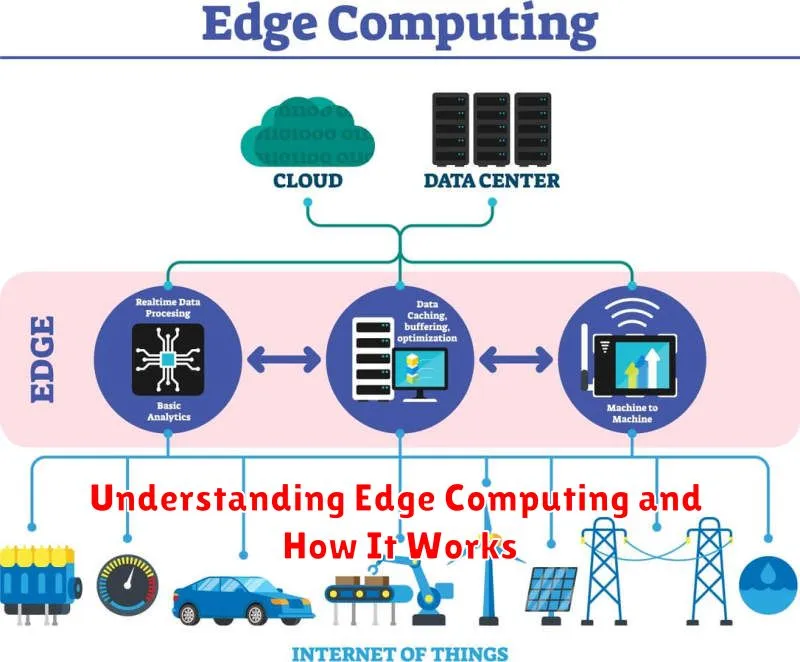In today’s rapidly evolving technological landscape, edge computing has emerged as a transformative paradigm, revolutionizing the way data is processed and managed. This approach pushes computation and data storage closer to the edge of the network, nearer to the devices and users generating the data. This strategic shift offers significant advantages over traditional centralized cloud computing models, particularly in areas requiring real-time processing, reduced latency, and enhanced security. Understanding edge computing and how it works is crucial for businesses and individuals seeking to leverage its potential for innovation and efficiency.
This article aims to provide a comprehensive overview of edge computing, exploring its core principles, architecture, and functionalities. We will delve into the benefits of adopting edge computing solutions, highlighting its impact on various industries such as manufacturing, healthcare, and transportation. Furthermore, we will discuss the challenges associated with edge computing implementation and examine the future trends shaping this rapidly growing field. By the end of this article, you will possess a strong foundational understanding of edge computing and its potential to transform the digital world. We will also explore the key differences between edge computing and cloud computing to solidify your understanding of these powerful technologies.
What Is Edge Computing?
Edge computing is a distributed computing paradigm that brings computation and data storage closer to the sources of data. This minimizes latency and bandwidth use while increasing processing power at the edge of the network.
Instead of relying on a centralized cloud server, edge computing processes data locally. This can be on a device itself, like a smartphone, or on a local server closer to the device. By processing data at the edge, applications can respond faster and more efficiently.
Edge vs Cloud: The Key Differences
While both edge and cloud computing offer significant advantages for data processing, they differ in several key aspects. Cloud computing relies on centralized data centers to process and store data. This offers scalability and cost-effectiveness but can introduce latency, especially for time-sensitive applications.
Edge computing, in contrast, processes data closer to the source, at the “edge” of the network. This significantly reduces latency and bandwidth requirements, making it ideal for applications demanding real-time responses. Edge computing also improves security and reliability by reducing dependence on a central connection.
| Feature | Edge | Cloud |
|---|---|---|
| Processing Location | Close to data source | Centralized data centers |
| Latency | Low | Higher (potentially) |
| Bandwidth Requirements | Lower | Higher |
| Scalability | Limited | High |
Real-World Use Cases

Edge computing finds applications across diverse industries, transforming operations and enabling new possibilities. Let’s explore some key examples:
Industrial Automation
In manufacturing, edge computing facilitates real-time data analysis for predictive maintenance, optimizing production processes, and enhancing quality control. This reduces downtime and improves overall efficiency.
Content Delivery
Faster content delivery and improved user experience are achieved by processing data closer to the end-user. This is especially crucial for streaming services and online gaming platforms.
Autonomous Vehicles
Self-driving cars rely on rapid data processing to make split-second decisions. Edge computing allows for quicker reaction times, enhancing safety and navigation.
Benefits for IoT and Smart Cities
Edge computing offers significant advantages for the growing Internet of Things (IoT) and the development of smart cities. By processing data closer to its source, edge computing reduces latency, a critical factor for real-time applications like traffic management and emergency response systems. This localized processing also minimizes the amount of data transmitted to the cloud, leading to reduced bandwidth consumption and lower costs.
Furthermore, edge computing enhances data security and privacy. Sensitive data can be processed and analyzed locally, reducing the risk of exposure during transmission and storage in the cloud. This localized approach also improves reliability, as systems can continue to function even with intermittent internet connectivity.
Security and Latency Considerations
Security is a crucial aspect of edge computing. Distributing processing increases the potential attack surface. Therefore, robust security measures, including data encryption, access controls, and intrusion detection systems, are essential to protect sensitive data and maintain system integrity across the distributed edge network.
Latency is a primary driver for adopting edge computing. By processing data closer to the source, edge computing significantly reduces the time it takes for data to travel to a centralized data center and back, minimizing latency. This is particularly important for applications requiring real-time responses, such as industrial automation, autonomous vehicles, and interactive gaming.
Challenges in Edge Deployment
Deploying edge computing infrastructure presents unique challenges. Security is paramount, as distributed edge devices can be vulnerable to attack. Protecting data integrity and ensuring secure communication are crucial considerations.
Scalability is another key challenge. Edge deployments often involve a large number of devices, and managing and orchestrating these devices efficiently can be complex. Maintaining consistent performance across the entire edge network is essential.
Connectivity is also a critical concern. Edge devices may be located in areas with limited or unreliable network access. Ensuring continuous operation and data synchronization in such environments requires careful planning and robust solutions.
Finally, the heterogeneity of edge devices can pose integration and management challenges. Different devices have different hardware and software specifications, requiring specialized management tools and expertise.

